If you’ve already done the usual tourist route that takes in Tokyo, Mount Fuji and Kyoto, it’s worth considering a visit to Kyushu, the third largest island in Japan and the most south westerly. There’s volcanic activity here, with eruptions as recent as 2018, the largest collection of hot springs in the country, impressive Samurai castles and the world’s only toilet museum.
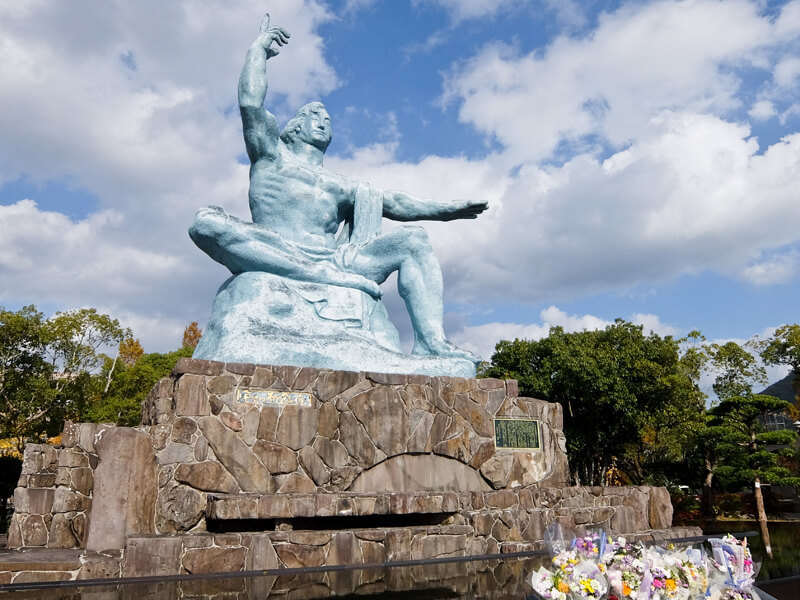 Nagasaki is probably the one Kyushu city you’ll have heard of as it was the site of the second atomic bomb blast at the end of WW2. Bad weather forced American planes to divert from their original target of Kitakyushu and bomb the city instead. Over 75,000 died and 75,000 were injured. These days, if it were not for the memorials, museum and Peace Park, you’d never know that the quiet suburb of Urakami was completely destroyed.
Nagasaki is probably the one Kyushu city you’ll have heard of as it was the site of the second atomic bomb blast at the end of WW2. Bad weather forced American planes to divert from their original target of Kitakyushu and bomb the city instead. Over 75,000 died and 75,000 were injured. These days, if it were not for the memorials, museum and Peace Park, you’d never know that the quiet suburb of Urakami was completely destroyed.
A smooth black stone column marks the point where the bomb exploded 500m from the ground. This was the site of Urakami Cathedral, the largest Catholic Church in Asia, and only a fragment of wall remains. The Peace Memorial Park, close by, is dominated by sculptor Kitamura Seibō’s muscular Peace Statue, erected in 1955.
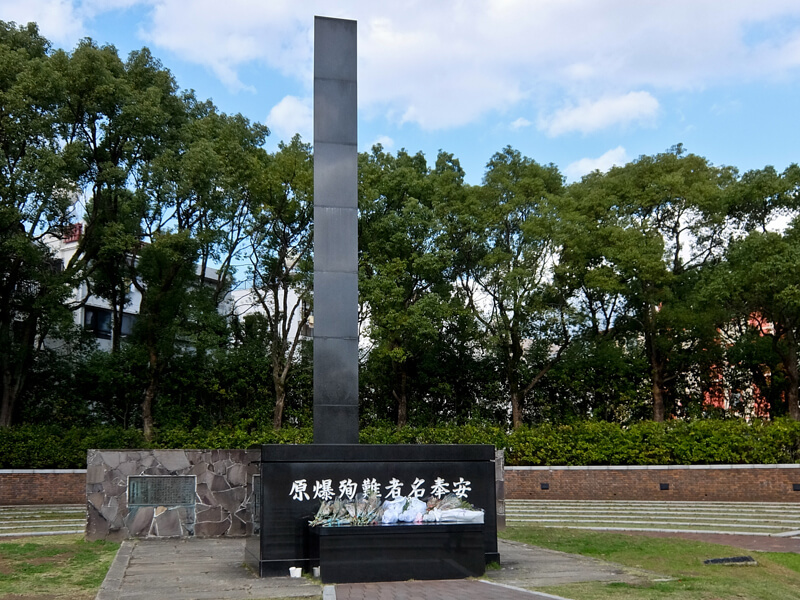 To appreciate the full scale and horror of the destruction, take the circular walkway leading down to the Atomic Bomb Museum. You’re greeted with pleasant views of pre-war Nagasaki then you enter a darkened room showing videos with stills of the dead and wounded. A display of personal objects, including a schoolgirl’s charred lunchbox and a helmet with the remains of a skull, bring home the individual tragedy.
To appreciate the full scale and horror of the destruction, take the circular walkway leading down to the Atomic Bomb Museum. You’re greeted with pleasant views of pre-war Nagasaki then you enter a darkened room showing videos with stills of the dead and wounded. A display of personal objects, including a schoolgirl’s charred lunchbox and a helmet with the remains of a skull, bring home the individual tragedy.
In spite of the tragedy this is a beautiful city, set on a huge bay where the shipyards are still busy and mountains frame the skies. From middle of the 16th century, for over 200 years, Japan’s only contact with the outside world was the Dutch trading post on the island of Dejima. There’s just one street, with the architecture a strange mix of Dutch and Japanese, and it was linked to the mainland by a heavily guarded bridge.
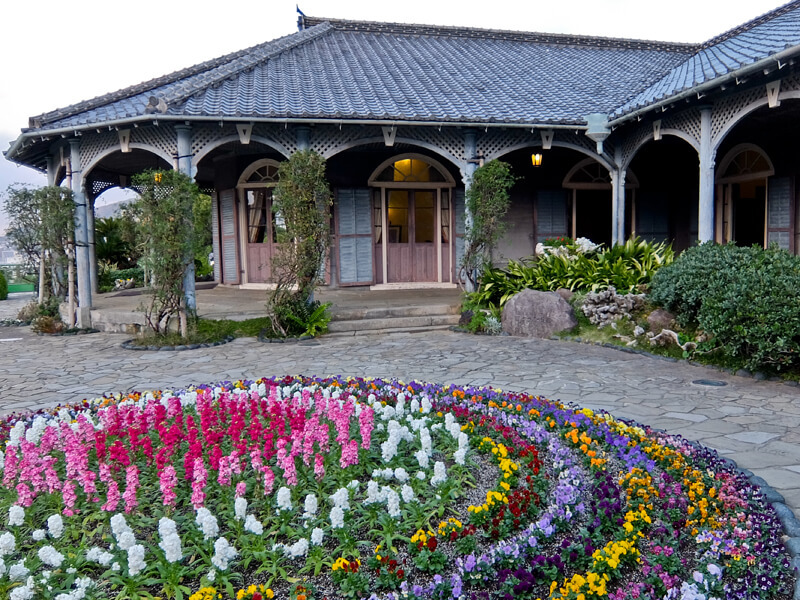 Another part of the city’s past is found in Glover Garden where houses of 19th century European residents have been reassembled. It’s named after Scotsman Thomas Glover who built Japan’s first railway and helped establish the shipbuilding industry here. His house, the oldest Western style building in Japan, sits at the top of the hill and halfway down is a statue of Japanese opera singer Tamaki Miura who found fame in the West as Puccini’s Madame Butterfly.
Another part of the city’s past is found in Glover Garden where houses of 19th century European residents have been reassembled. It’s named after Scotsman Thomas Glover who built Japan’s first railway and helped establish the shipbuilding industry here. His house, the oldest Western style building in Japan, sits at the top of the hill and halfway down is a statue of Japanese opera singer Tamaki Miura who found fame in the West as Puccini’s Madame Butterfly.
Unzen is an hour’s bus journey away, with a selection of high end hotels tastefully hidden in the woods all offering steam baths, or onsen. It feels like one of those Indian hill resorts and boasts the oldest public golf course in Japan, opened in 1913.
Bubbling hot springs, known as hells, gush with steam and 33 Christians were tossed into Oito Jigoku in 1630. These days they only boil eggs here, and there’s a strong whiff of sulphur.
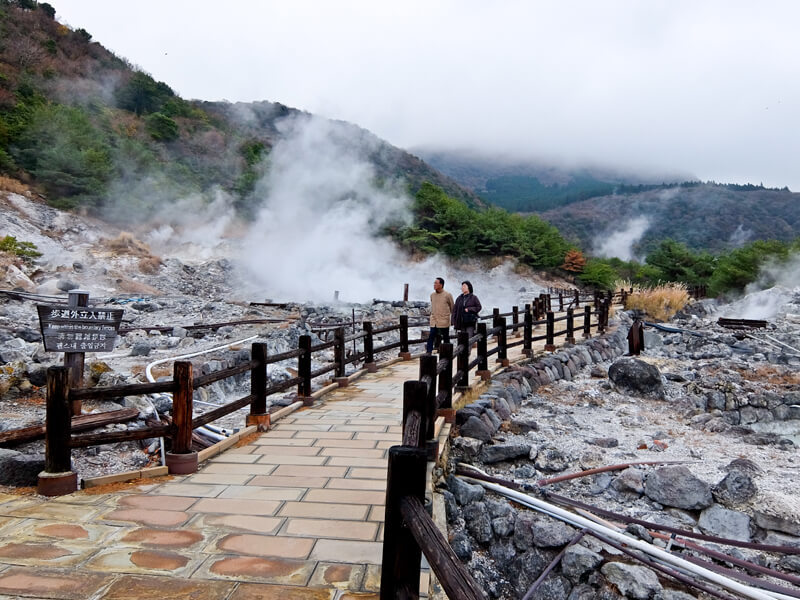 To catch the mountain air, take advantage of an extensive network of hiking trails in the Unzen National Park, all handily signposted in English. Active volcanoes tower above the town and Mount Fuken last erupted in 1990, although it’s still steaming. Time your visit for late spring when the pink Azaleas are blooming or autumn when the leaves are turning technicolour reds and yellow.
To catch the mountain air, take advantage of an extensive network of hiking trails in the Unzen National Park, all handily signposted in English. Active volcanoes tower above the town and Mount Fuken last erupted in 1990, although it’s still steaming. Time your visit for late spring when the pink Azaleas are blooming or autumn when the leaves are turning technicolour reds and yellow.
The largest collection of hot springs in Japan is found in Beppu, around a four hour train ride east of Nagasaki. Every day 100 millions of litres of hot water gush from the ground creating dense plumes of steam that makes you think the town is on fire. They feed a wide range of onsens (hot baths), from basic public ones to luxury pools in upmarket boutique hotels. Be aware that complete nudity is obligatory although the sexes are separated.
The bubbling hot springs where the water temperature is too high to bathe are known as Jigoku or Hells. You take your pick from the steaming artificially Blue Sea Hell, Oven Hell, with dragons and demons overlooking a lake, and Waterspout Hell, where a geyser performs regularly. All come with cartloads of Korean tourists led by guides with show stopping patter.
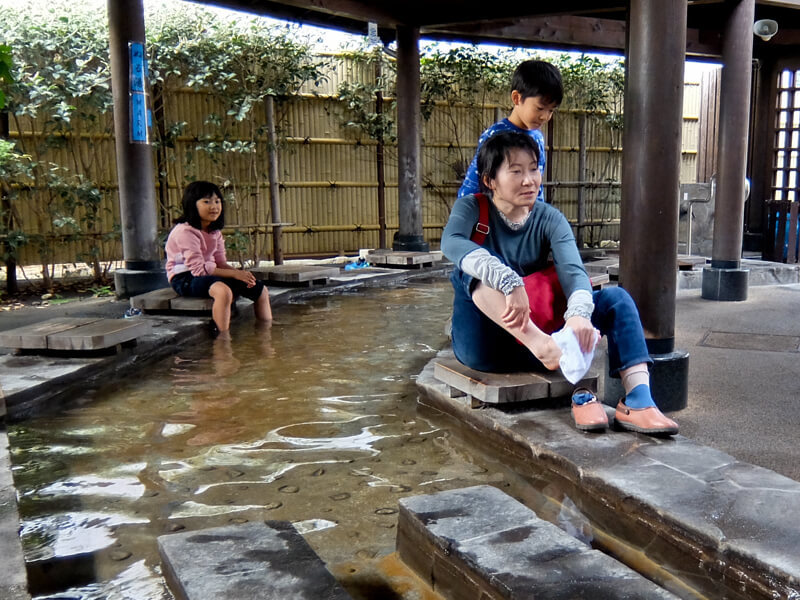 All over Beppu they use the natural hot steam for cooking – you’ll be served vegetables like sweetcorn, sweet potato, cabbage and pumpkin or meat including pork belly and chicken. I find the steamed breakfasts are particularly delicious. I wish I could say the same for the soggy pizza, dripping molten cheese and topped with prawns.
All over Beppu they use the natural hot steam for cooking – you’ll be served vegetables like sweetcorn, sweet potato, cabbage and pumpkin or meat including pork belly and chicken. I find the steamed breakfasts are particularly delicious. I wish I could say the same for the soggy pizza, dripping molten cheese and topped with prawns.
Heading north, it’s two hours by train to the industrial port city of Kitakyushu, the original target for the second atomic bomb. The old port of Moji, where sea passengers once arrived from other Asian destinations in the 19th century, has been imaginatively preserved. There’s also a railway museum in the Mojoki station offices, with vintage rolling stock and locomotives in the sidings.
The Museum of Natural History and Human History opened in 2002 and takes you through the history of the city starting from prehistoric times up to the present. Perhaps the most idiosyncratic tourist attraction is the TOTO Museum, dedicated to toilets – it’s free so you don’t have to spend a penny. There’s a gallery showing the evolution of toilets and urinals over the years and even historical fittings from the Tokyo US High Command and the Japanese Parliament.
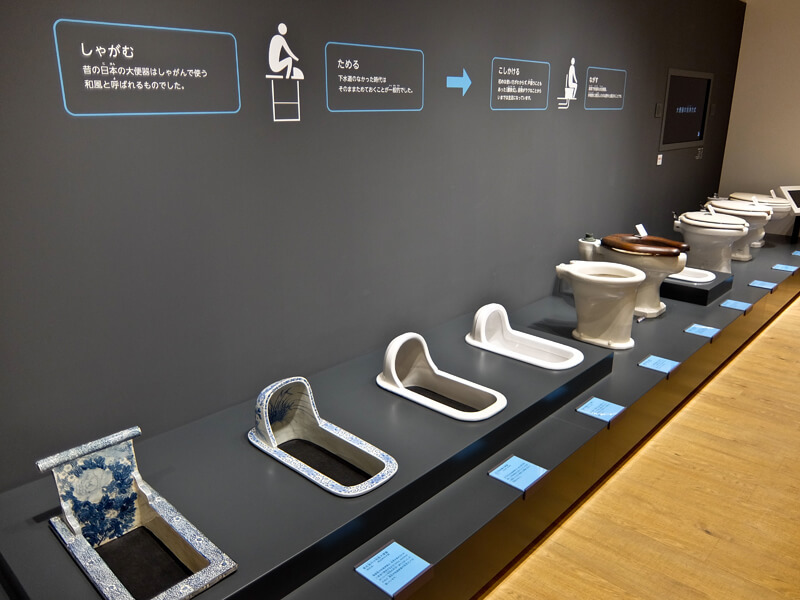 Kumamoto, two and half hour’s south, is home to Japan’s third largest castle, built between 1601 and 1607, and considered impregnable. Unfortunately there was a massive earthquake in 2016 which damaged roofs and towers and also brought down some of the walls. At the moment you can only view it from the outside and reconstruction work will take at least twenty years. Still it’s an impressive sight and there’s an excellent museum where actors re-enact the story of siege.
Kumamoto, two and half hour’s south, is home to Japan’s third largest castle, built between 1601 and 1607, and considered impregnable. Unfortunately there was a massive earthquake in 2016 which damaged roofs and towers and also brought down some of the walls. At the moment you can only view it from the outside and reconstruction work will take at least twenty years. Still it’s an impressive sight and there’s an excellent museum where actors re-enact the story of siege.
The water in the lake in nearby Suizenji Jojuen Park lost all its water during the earthquake but the gardens were otherwise undamaged. They’re considered to be some of Japan’s most beautiful and go back to 1632 when they surrounded a temple, now long gone. The design supposedly recreates scenes on the road between Tokyo and Kyoto, and there’s a recognisable mini Mount Fuji surrounded by shrubs, miniature pines and plum trees.
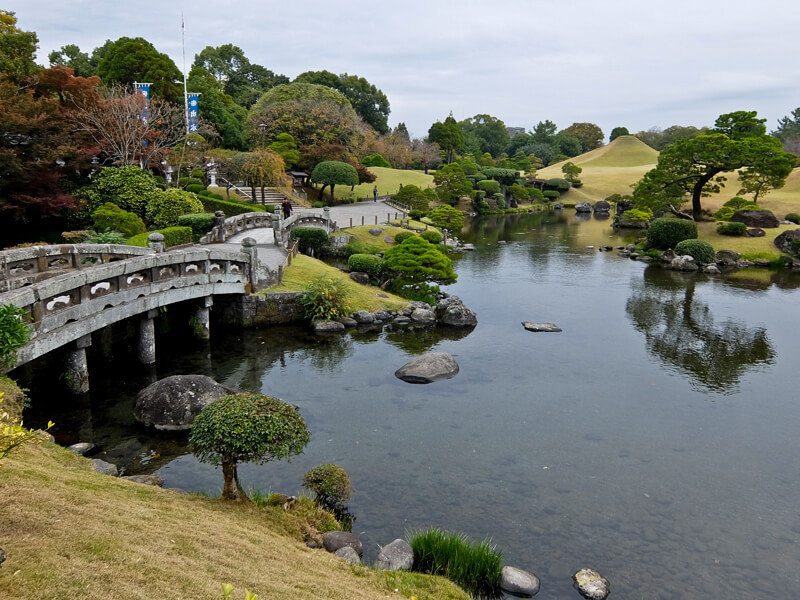 The water in Kumamato has a reputation of being some of the best in Japan, particularly important when you are making sake. The Zuiyo Brewery, founded in 1867, has its own well and uses local rice, originally shipped in by boat. You can take a guided tour round the factory and finish with a tutored sake tasting – a perfect end to a journey around Kyushu.
The water in Kumamato has a reputation of being some of the best in Japan, particularly important when you are making sake. The Zuiyo Brewery, founded in 1867, has its own well and uses local rice, originally shipped in by boat. You can take a guided tour round the factory and finish with a tutored sake tasting – a perfect end to a journey around Kyushu.
Travelling around Japan is not quite as daunting as it first seems. Announcements on trains and metro are in English and staff in hotels and railway stations go out of their way to understand you. Most restaurants have pictures of their dishes so you can just point out the ones you want. If you find yourself stuck, just ask a local – Japanese people are always will to help and if they can’t speak English, they’ll find someone who can.
More information
Japan National Tourism has information about the country.
Kyushu has information about the region.
Japan Airlines flies from Heathrow via Tokyo to Nagasaki, Kumamoto, Kitakyushu and Oita (for Beppu).
Nagasaki
Visit Nagasaki has information about the city.
APA Hotel Nagasaki-Ekimae is handy for the station and downtown.
Unzen
Unzen has information about the area.
Unzen Fukudaya is a traditional hotel with thermal baths and excellent food.
Beppu
Enjoy Onsen has information about Beppu.
Hotel Yanagiya has its own onsen and serves excellent food.
In Bloom Beppu is a refurbished traditional Japanese house with a helpful owner.
Kitakyushu
Gurich! KitaQshu has information about Kitakyushu.
Premier Hotel Mojiko has great views over the harbour.
Kumamato
Kumamoto has information about the city.
The Richmond Hotel is convenient for the railway station in the centre of the city.











